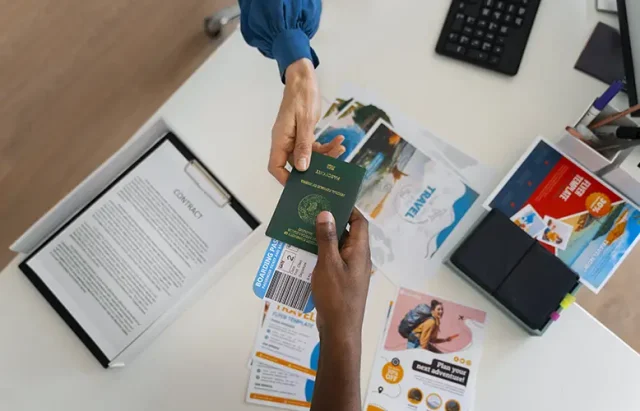
As a frequent traveler, I’ve learned that understanding visa regimes is essential to planning trips smoothly and avoiding unexpected hurdles. With many countries having different visa policies and requirements, it can sometimes feel like navigating a maze to ensure you have the correct documents for entry. In this post, I’ll share some practical advice on how to plan your travels considering the various visa regulations around the world, and how you can make the process easier and more predictable.
Why Is It Important to Check Visa Rules in Advance?
The first and most important rule of travel planning is to always check visa requirements well before your trip. Many travelers, especially those going to countries with more complicated entry requirements, face problems when they realize they don’t meet the visa criteria or that they’ve missed important deadlines.
Checking visa requirements in advance allows you to make informed decisions about the countries you want to visit. Some countries allow visa-free entry, others offer visas on arrival, and some require you to apply for a visa beforehand. Visa policies can change unexpectedly due to political reasons, security concerns, or public health situations like pandemics, so it’s crucial to keep updated on the latest information.
There are also timeframes to consider, as some visas take longer to process than others. For example, a tourist visa to the United States or Canada might take several weeks to be approved, while a visa to a neighboring country could be processed within a few days. Additionally, the type of visa (tourist, business, student, etc.) might impact the processing time, so knowing what you need ahead of time helps avoid rush decisions.
How to Find and Understand the Current Visa Requirements for Different Countries?
When researching visa requirements, the internet is your best friend. Most governments have official websites that provide up-to-date information about visa types, entry requirements, and processing times. These websites also list documents you’ll need to provide, including proof of travel plans, financial stability, return tickets, health insurance, and sometimes even biometric data.
To make the process easier, there are also several reputable third-party websites and visa agencies that can help clarify the rules for the countries you plan to visit. They often provide a more digestible format, summarizing key information like visa types and requirements. However, it’s still important to verify any information you find through official government channels to avoid inaccuracies.
If you’re planning on visiting multiple countries, be aware that visa policies can vary greatly from one destination to the next. Some regions, such as the European Union, have a uniform visa policy that allows you to travel between member countries with a single visa. Other regions, like Southeast Asia, might require separate visas for each country, even if you are traveling within a small geographical area.
If you’re traveling for work, research, or education, you might need additional documentation, such as invitations from employers or universities. If this is the case, start gathering these documents well in advance, as they often take longer to obtain.
What to Do If You Didn’t Get the Visa in Time?
I’ve been in situations where I didn’t receive my visa in time, and it’s one of the most stressful travel experiences you can have. There are several strategies to help prevent this from happening, and some things you can do if you find yourself in this position.
- Apply early: Always aim to apply for your visa well ahead of your planned departure date. Most countries recommend applying for a visa at least two to three months before your trip. This gives you ample time to resolve any issues or delays in the process.
- Expedited Services: If you realize you’re running out of time, some countries offer expedited visa processing services for an additional fee. It’s worth considering this option if you’re in a rush, but keep in mind that not all countries provide this service, and it may not be available for all visa types.
- Contact the Embassy: If your visa application is delayed or you encounter issues, the best course of action is to directly contact the embassy or consulate. They may be able to offer guidance, expedite the process, or give you a temporary solution, such as a transit visa or an emergency travel permit.
- Travel without a visa: Some countries offer visa-free or visa-on-arrival entry, but this depends on your nationality and the country you’re visiting. In some cases, travelers may be able to enter a country without a visa for short stays, but this is usually a more limited option, and not all countries allow it.
- Reassess your travel plans: If you still don’t receive your visa in time, consider postponing your trip or adjusting your itinerary to avoid the country you’re waiting on a visa for. This is not an ideal solution, but it’s better than risking complications at the border.
How Citizenship by Investment Helps You Travel Without Restrictions?
For those who frequently travel or have specific countries they need to visit for business or investment, acquiring a second passport through citizenship by investment can be a game-changer. Many countries offer citizenship programs that allow individuals to acquire a second passport in exchange for investment in the country’s economy. This not only provides a pathway to permanent residency but also offers unrestricted travel within the participating countries and beyond.
For example, acquiring citizenship in a country with strong visa-free access to many regions can open doors to global travel without the hassle of applying for visas each time you plan a trip. Many of the Caribbean nations that offer citizenship by investment provide their passport holders with visa-free access to a wide range of countries, including the European Union, the United Kingdom, and even Canada. This can be particularly valuable for business travelers or individuals with multinational responsibilities.
Additionally, a second passport can provide greater flexibility and security in terms of international mobility, especially for individuals who come from countries with more restrictive visa policies. Having access to a second passport can streamline your travel plans and significantly reduce the time spent dealing with visa applications.
In conclusion, understanding visa regimes and planning your travel with this knowledge is crucial for avoiding unnecessary delays and stress. Whether you’re planning a vacation, business trip, or relocation, early preparation and knowing your visa options can help make your travel experience seamless and enjoyable. And for those who want even more freedom, programs like citizenship by investment offer a long-term solution to unrestricted travel.





